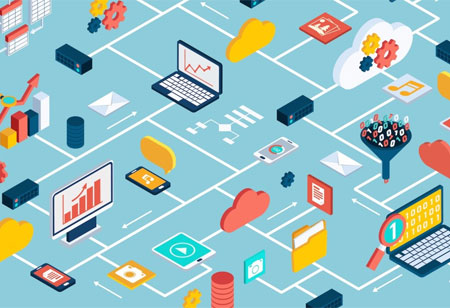THANK YOU FOR SUBSCRIBING
Technology-driven Law Enforcements To Diminish the Crime Rate
Technology has highly scrutinised aspects of people's lives, activities, and industries, where the law enforcement sector stands as a frontier.

By
Apac CIOOutlook | Sunday, November 13, 2022
Stay ahead of the industry with exclusive feature stories on the top companies, expert insights and the latest news delivered straight to your inbox. Subscribe today.
Deploying technology in law enforcement scrutinises police officers' work with proven accuracy and efficiency in controlling crimes.
FREMONT, CA:Technology has highly scrutinised aspects of people's lives, activities, and industries, where the law enforcement sector stands as a frontier. That is, as a result of technological advancements, the methods used by law enforcement to investigate crimes have significantly evolved in recent years. For instance, India maintains nearly 181.47 sanctioned and actual police personnel per lakh population, totalling nearly 17.2 million officers across the country.
Though increased police patrol accommodations improve assurance and safety in the face of crime, technology intervention in the domain has become critical for and achieved efficacy in law enforcement and crime resolution. Furthermore, the innovation compensates for the disadvantage of raising the population rate to that of police officers. Moreover, the police reforms in India are yet to achieve an acceleration in their pace of coping, where technology stands as a solution to these hindrances.
Emerging new digital technologies in the sector are radically altering police protection and service methods, allowing agencies to prevent and solve crimes more quickly. Hence, adopting these technology-driven transitions in the sector and harnessing them effectively has become more of a demand than an opportunity in the Indian patrol space.
One feasible approach to deploying technology in the law enforcement arena is surveillance and monitoring via devices like CCTV, drones, body-worn cameras, in-car videos, GPS (Global Positioning System), and automatic tag and licence plate readers. CCTV systems, for example, are located in nearly every possible metropolis throughout India, enforcing the efficient and acute use of law in the region. Thus, it enables real-time monitoring of incidents, thereby favouring sufficient evidence over crimes and the innocence of any charges. Similarly, the CCTV cameras situated along roads and toll barriers enable the efficient solving of issues via examining suspect moments consistently and effectively.
Likewise, law enforcement agencies are deploying drones for varied functions, owing to their capability of facilitating cost-effective solutions. That is, drones circulate and transmit critical information about transgressions to police and crime analysts in real-time. This, in turn, allows police to plan better responses, ultimately saving lives. Drones make it possible to meticulously live stream videos and images of crimes, providing crucial evidence in future court proceedings. Thus, deploying drones has enabled the effective handling of varied situations, replacing helicopters for monitoring and surveillance where police officers may face a delay in reaching directly.





